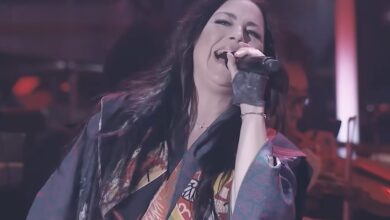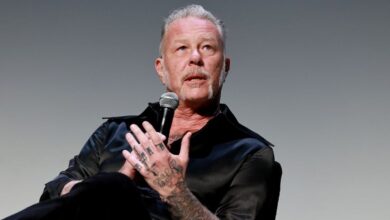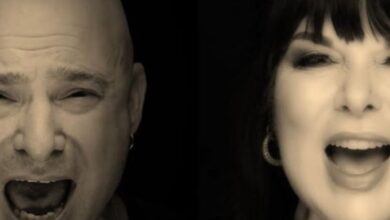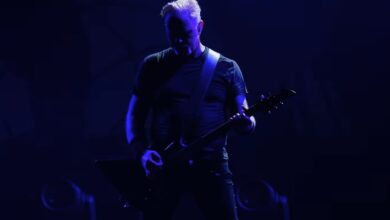James Hetfield Proves His Legend by Playing and Singing Master of Puppets Live on Howard Stern
Metallica’s in-studio performance of “Master of Puppets” on The Howard Stern Show took place on Monday, September 26, 2016, at SiriusXM Studios in New York. It wasn’t a promo mime or a TV mix—the band hauled in full rigs and played live in front of Howard’s crew and a small studio audience, capturing the intensity of a stadium show in a room built for radio. Clips from the session were released the same day through Stern’s channels.
The appearance was scheduled in tandem with the rollout of Hardwired… to Self-Destruct, with SiriusXM announcing beforehand that the band would perform material spanning its thirty-plus-year catalog alongside new songs. That framing explains why a blistering “Master of Puppets” sat next to a premiere-cycle cut like “Hardwired” in the set—old thunder meeting new spark on live radio.
Setlist documentation confirms the morning’s trio: “Master of Puppets,” “Sad But True,” and “Hardwired.” It’s a compact run that shows three very different gears—thrash endurance, groove metal weight, and whiplash-tight modern speed—each requiring a distinct performance mindset from the same four players. The way they shift those gears on the fly is part of why this session stands out.
“Master of Puppets” itself stretched to a near ten-minute epic in Stern’s studio, a version the show has resurfaced repeatedly because of how completely it lands in a non-arena environment. You can hear room bleed, amps breathing, and the band letting sections expand without losing the song’s iron spine. It’s the power of a concert captured at handshake distance.
James Hetfield’s task is brutally difficult: sing a syncopated melody while downpicking machine-tight eighth notes at high speed, all while cueing transitions for the band. Guitar teachers point out how few singers attempt this kind of coordination at tempo; on this day, Hetfield locks the right hand like a metronome and phrases vocals with a veteran’s economy, proof of years of disciplined practice. The footage shows the focus in his posture and breath.
Kirk Hammett brings the signature lead voice—wah-inflected lines that still honor the original phrasing yet shift micro-choices to suit the room. In a dry studio mix, bends and vibrato either hold pitch or betray you; here, the bending is centered and the fast sequences stay articulate, giving the solo its knife-edge drama without the cushion of arena reverb. The result feels surgical and dangerous at once.
Robert Trujillo’s bass line is the unsung engine of this rendition. In the verses he locks to Lars Ulrich’s kick to make the riff feel wider, then in the clean interlude he rounds the tone so the harmony breathes rather than thins. The line is simple on paper but merciless at this tempo; his consistency, attack, and pocket are why the track never sags. The cameras catch every right-hand detail.
Ulrich’s drumming emphasizes momentum over ornament—ride-cymbal patterns that slice through the mix, tightly controlled double-time bursts, and snare accents that cue section changes. In a room that exposes dynamics, he keeps the choruses tall and the verses lean, which is one reason the long arrangement feels like a sprint instead of an endurance test. The transitions into the interlude and back out land on a dime.
One charm of the session is how radio-room constraints punch up the details you might miss at distance. The clean guitars in the breakdown bloom with chime, and the vocal stacks sit dry enough to show exact tuning. Little glances between Hetfield and Hammett cue entrances; Trujillo and Ulrich nod through the start-stop figures. It’s heavy metal presented with the intimacy of chamber music.
The band didn’t rely on sweeteners or fixes. The Stern Show’s own write-up and video embeds present the takes as they happened, side-by-side with “Sad But True” and “Hardwired.” That editorial choice—letting the raw performance stand—matters in an era of invisible tuning and hidden tracks. The clips became go-to examples fans share when they say, “This is what real, live playing looks like.”
Context elevates the moment: Metallica had just lit up Central Park for Global Citizen Festival and would play a tiny-room gig at Webster Hall the next night, so they were road-sharp and fully rehearsed. The Stern session captures a band at working temperature—muscle memory fresh, confidence high, and new material tightening the reflexes they bring to a classic.
Despite the small space, the arrangement remains full length—no abridged structures to fit radio clocks. That decision lets the dynamics breathe: the clean mid-section feels like a held breath, the return hits like a sledgehammer, and the final accelerando surges without losing clarity. It’s a reminder that the composition’s architecture can thrive anywhere, not just through arena PAs.
The performance also served the album campaign without making the classics feel like props. Announcements in the days prior framed the appearance as a celebration of the band’s history and a peek at what was coming on the November 18 release date. That balance—legacy and new fire—comes across organically in the musicians’ body language and the set’s sequencing.
Stern’s team promoted the videos across platforms, and Metallica archived the clips on their own site, which is why this version keeps resurfacing in fan threads. The band’s official page lists the show and aggregates the videos, turning a morning radio drop-in into a canonical live document you can revisit whenever you want a clean, close-miked reminder of what they can do.
In the end, the take resonates because it is both workmanlike and spectacular: four musicians in a bright room doing something extremely hard and making it look normal. Trujillo’s bass sounds colossal and precise. Hetfield sings and drives the riff simultaneously—a feat most players won’t even attempt. No autotune, no backing tracks—just a band proving, once again, why “Master of Puppets” still rules the room.





